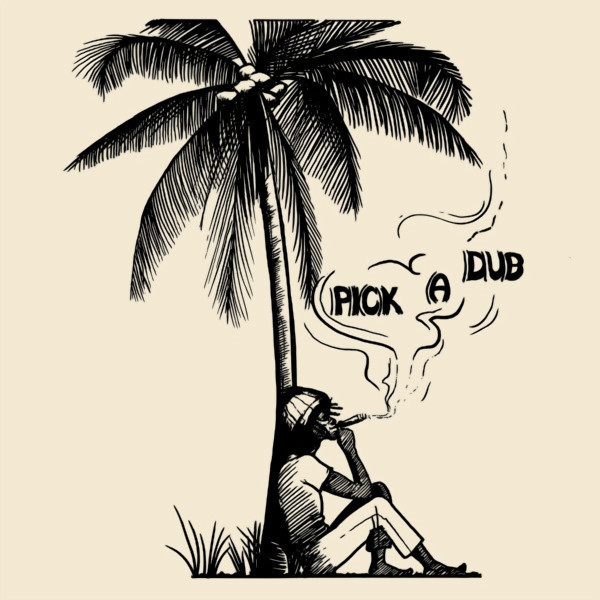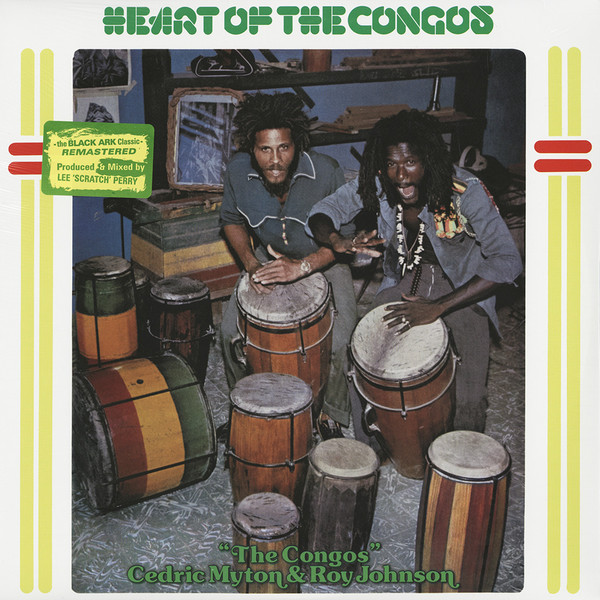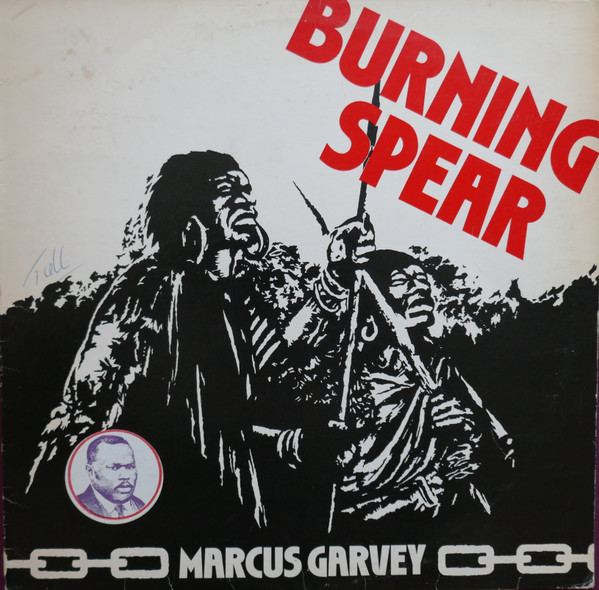Essential Dub Records: 1973-1985
Dub’s studio alchemy changed music forever. Discover the roots of its genre-defying influence.
Historians may not agree about who made the first dub album, but it’s undeniable that 1973 was a pivotal year for the genre.
The new reggae offshoot had been bubbling in Kingston, Jamaica, for years. Producers started experimenting with the possibilities of manipulating reggae tracks in the studio, and a distinguished few chose 1973 to cash in the results of their dub investigations. Some had already been making instrumental versions of roots and rocksteady tracks to satisfy the rise in Jamaica’s dancehall DJ scene. However, the likes of Clive Chin, Errol Thompson, Osbourne “King Tubby” Ruddock, and Lee “Scratch” Perry were increasingly interested in how new studio-based effects technology could propel reggae in a different direction.
What happens when a test tone — a standard bleep used to check volume controls and other settings — gets manipulated? What if every knob on a brand-new filtering system, designed to eliminate low-end rumbles, gets cranked to the max? What if a producer strips an instrumental down to the drum and bass only? And what kind of spaceship sounds come from hitting a reverb box casing with a stick?
Dub-making evolved from these kinds of experiments. Vocals once central to tracks faded in and out. Sirens blared, and telephones rang. Snare drum rimshots ricocheted through echo chambers like laser blasts. Producers explored the spatial dimensions of sound, and their discoveries shaped a new genre. Dub became a powerful foundation for musical styles well beyond reggae, most notably in electronic genres of all creeds.
The following list of albums, though, examines the productive years from 1973 until 1985, as dub entered music’s international language. For further reading, check out the famous Snoopy’s list of exceptional dub albums created in 1977 and (Blood and Fire label founder) Steve Barrow’s 21 Dub Salute list on Discogs.
The Upsetters
Blackboard Jungle Dub (1973)
Contenders for Jamaica’s first dub album include Java Java Java Java by producers Clive Chin and Errol Thompson, Aquarius Dub by Herman Chin-Loy, and Dub Store Special by Studio One label owner Clement “Coxsone” Dodd, released under his pseudonym Dub Specialist. But in terms of lasting critical impact, the 1973 standout came from the mercurial reggae icon and producer Lee Perry.
Credited as the Upsetters — and sometimes titled Upsetters 14 Blackboard Jungle Dub — Blackboard Jungle Dub stood out thanks to the addition of King Tubby. Tubby had already begun recalibrating his studio gear to push dub’s sonic boundaries. When he teamed up with Perry, their shared vision sparked an ideal creative partnership. Together, they reshaped instrumental versions of the Wailers’ “Dreamland,” Junior Byles’ “Place Called Africa,” and other Perry productions into a thunderous, echo-soaked dub set. Although the original master tapes no longer exist, reissues include a 10-inch vinyl box set and a CD digipak edition.
Keith Hudson
Pick A Dub (1974)
Starting out as a producer for John Holt and local dancehall hero Big Youth, Keith Hudson got his start as a singer in the early 1970s before taking a behind-the-scenes roll. Hudson’s time commanding the production desk gave him an intimate knowledge of a studio’s technical possibilities and the changing trends in Jamaican reggae. By the end of 1973, he had already engineered various dubwise versions of roots, dancehall DJ, and rocksteady tracks. An album composed entirely of dub cuts was the next logical step.
Pick A Dub follows Perry and Tubby’s lead, as Hudson pulls together a selection of pre-existing tracks, including the Rastafarian-themed roots anthems “Declaration of Rights” and “Satta Massagana” by the Abyssinians, and reworked them in the studio. Having selected the instrumentals, Hudson recruited the Wailers’ drummer and bass player, brothers Aston and Carlton Barrett, and melodica player Augustus Pablo to add depth, punch, and melody to the project. To round out the project, Hudson jumped on the mic with reggae singer Horace Andy and Big Youth.
While Tubby and Perry made full use of the studio effects on offer for Blackboard Jungle, Hudson’s genius on Pick A Dub skewed minimal, almost skeletal, an album where the music itself, not the experiments, stood front and center.
Bunny Lee
Creation Of Dub (1975)
Edward “Bunny” (sometimes “Striker”) Lee played a pivotal figure in reggae’s development in Jamaica. A sound engineer in the mid-1960s, by the end of the decade Lee became a fully-fledged producer and label owner of Jackpot Records, as well as a conduit for reggae releases between Jamaica and the U.K. As with Tubby and Perry, the notion of using the recording studio as a toolbox excited Lee. Unsurprisingly, his first project as a dub producer, the Creation Of Dub album, bristles with experimentation.
Having spent time watching Tubby tinker with a new suite of effects and homemade instruments, he decided to use the pioneer’s studio for his dub debut. Instrumentation came from Lee’s venerated house band, the Aggrovators (that featured saxophonist Tommy McCook, keyboard player Jackie Mittoo, Sly Dunbar, Robbie Shakespeare and others), with the team working on instrumental versions from Lee’s back catalog. All the stars aligned for the set, and the outcome was a darkly resounding collection of deep new dubs.
Augustus Pablo
King Tubby Meets Rockers Uptown (1976)
The Upsetters
Super Ape (1976)
Lee Perry’s original house band, the Upsetters, had included brothers Aston and Carlton Barrett. By 1972, the duo had left to complete Bob Marley’s Wailers line-up, but their replacements were equally adept.
With Earl “Chinna” Smith on guitar, Boris Gardiner on bass, Winston Wright and Keith Sterling on keyboards, and Sly Dunbar, Mikey Richards, and Benbow Creary on drums, the group was stacked. And, with Lee Perry at the controls of his Black Art studio, Super Ape reinvented a premium list of the producer’s hottest tracks.
For “Croaking Lizard,” Perry invited dancehall DJ Prince Jazzbo to add his own rhymes over a dub-heavy instrumental of Max Romeo’s “Chase the Devil.” “Zion’s Blood” reworked Devon Irons’ devotional “When Jah Comes” track, and “Black Vest” dubbed up another major Max Romeo hit, “War Inna Babylon.”
The overall mood here is spiritual, the album’s heavy Rastafarian overtones make Super Ape a standout set in the canon.
Tapper Zukie
In Dub (1976)
King Tubby & Prince Jammy
Dub Gone 2 Crazy: In Fine Style 1975 – 1979 (1996)
After working on Tappa Zukie’s In Dub album, Philip Smart relocated to New York to set up his HC&F studio. In need of a replacement, Tubby called on Prince Jammy, who earned his chops from building electronics and running a sound system and studio. He’d also produced tracks for Yabby You.
Put together by the Blood and Fire imprint and released in 1996, Dub Gone 2 Crazy is a collection of dubs produced by Jammy and Tubby with the Aggrovators house band. Most of the tracks are dub versions of Johnnie Clarke’s roots reggae compositions and dubwise mixes of songs by Delroy Wilson, Leroy Smart and more. Like Smart, Jammy would go on to influence Jamaica’s ’80s and ’90s dancehall movement, producing Wayne Smith’s 1985 smash, “Under Me Sleng Teng.”
The Revolutionaries
Outlaw Dub (1979)
Born in Kingston, Jamaica, Linval Thompson started out as a roots vocalist cutting tracks with Lee Perry and Bunny Lee. Studio production work had always interested the singer and Thompson began producing his own work, starting with his 1978 solo album, I Love Marijuana and its dub counterpart, Negrea Love Dub. Released the following year, Outlaw Dub was a team effort with Thompson on writing and production duties and the Revolutionaries providing the roots reggae foundations.
Producer Joseph Hoo Kim had established the Revolutionaries as the house band for his Channel One studio. Led by Sly Dunbar, the collective was capitalizing on Dunbar’s invention of the rockers rhythm, a tougher style of drumming that superseded reggae’s traditional one drop rhythm wherein the emphasis was on the third beat in a bar. Thompson conducted the project from behind the production desk, folding in Dunbar’s rockers-style drumming on an album that walks the line between brilliant roots reggae and cavernous, late ’70s dub.
Linton Kwesi Johnson
LKJ In Dub (1980)
Linton Kwesi Johnson moved from Jamaica to London in 1963. After studying Sociology at London’s Goldsmiths College, he embarked on a career as an activist and dub poet; a spoken word artist who incanted compositions in rhythmic stops and starts. In the mid-1970s, Johnson met U.K. reggae producer and musician, Dennis Bovell, having admired Bovell’s work with his roots band, Matumbi. Post-punk and Jamaican reggae had been enjoying a love affair for the previous five years and Bovell was a respected figure on both scenes, helped in part by his production work on the Slits’ 1979 album Cut.
By 1980, Johnson and Bovell had been making albums together for three years, with Bovell’s production and backing band underpinning Johnson’s righteous poetry. Unlike the Johnson and Bovell’s Dread Beat An’ Blood, Forces of Victory and Bass Culture sets, LKJ In Dub isn’t a poetry album. Instead, Bovell (credited as Blackbeard) lays down dub versions of tracks composed for Johnson’s poems on previous releases, showcasing how U.K. dub could be faster-paced and less spacey than its Jamaican cousin.
Scientist
Meets the Space Invaders / Rids The World Of The Evil Curse Of The Vampires (1981)
Another of King Tubby’s acolytes, Hopeton Brown’s production career was kickstarted after Tubby gave him access to the controls at his Dromilly Road studio in Kingston. Brown knew his way around analog electronics – he had trained as an electrical engineer – and, after adopting his Scientist handle, set out to create some of the most adventurous albums in dub. Brown used a selection of Linval Thompson-produced tracks as the basis for his Scientist Meets the Space Invaders album, augmented by recordings from the Roots Radics.
For Scientist Rids The World Of The Evil Curse Of The Vampires, released the same year, the majority of the source material came from roots singer Michael Prophet’s and tracks from the Wailing Souls, Johnny Osbourne, and Wayne Jarrett. The Roots Radics once again provided instrumentation. Both albums build on the harder, rockers-style direction of roots reggae, with Brown creating dubwise worlds that shake with low-end bass and spiraling electro effects.
Mad Professor
Dub Me Crazy!! (1983)
Along with the late, great Jah Shaka, Neil “Mad Professor” Fraser ensured that the U.K. dub scene stood shoulder-to-shoulder with Jamaican productions. By the early ’80s, digital technology had begun to seep into reggae production, and labels and producers were moving towards a new dancehall sound that updated ground broken by Jamaican DJs in the 1970s.
Working in his self-built London studio, Fraser, however, saw how advances in digital electronics could be useful in the dub realm and Dub Me Crazy!! marks a time when the dub genre fully embraced evolving studio tech tools, drenched as it is in micro-noises, re-invented dub effects, and heavy-duty bass. Fraser’s breakthrough experiments in synthesized sound had a profound effect on multiple forward-thinking artists, including the U.K.’s digi-dub movement. Thanks to his work and vision, he soon went on to work with Massive Attack, the Orb, Beastie Boys, and others.
Sly & Robbie
A Dub Experience (1985)
The Rhythm Twins were central characters in reggae’s story, featuring on a dizzying amount of crucial cuts and breaking out of the Jamaican music sphere to collaborate with some of the biggest names in music. Released in 1985, Sly Dunbar and Robbie Shakespeare’s A Dub Experience album works as a snapshot of the duo’s dub work from the analog 1970s and into the digital experiments of the early 1980s.
Highlights on the set include “Destination Unknown,” a version of the title track from Black Uhuru’s 1982 Chill Out album, “Assault on Station 5” based on Dennis Brown’s 1985 track, “Revolution” and “Jailbreak,” a dub take of Junior Delgado‘s “Fort Augustus” (recorded for Sly and Robbie’s Taxi label in 1980). The album also includes the massive “Skull & Crossbones,” a crashing, head-spinning dub of the Roots Radics bass man Errol “Flabba” Holt’s “Danger Zone” single. Part of Island Records’ Reggae Greats series and a hits album of sorts, A Dub Experience is a tribute to the dub work of two of reggae’s most illustrious talents.
you might also like
-
-
-
-
-
-
Return Of The Super ApeThe Upsetters2022Reggae, Dub, Roots ReggaeVinyl, Album, Reissue, Remastered
-
-
-
-
KEEP DIGGING
Don’t miss a beat
Subscribe to Discogs’ email list to learn about sales, discover music, record collecting guides, product tips, limited edition offers, and more.


























